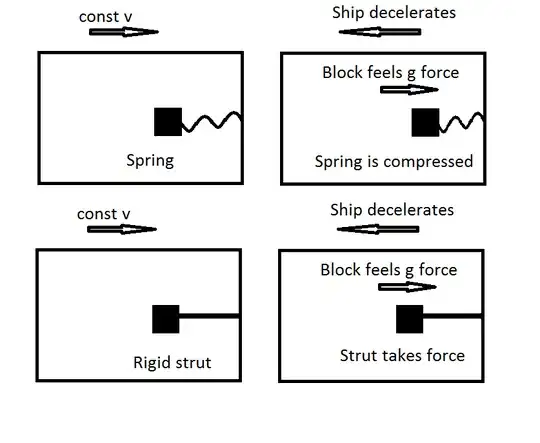This question comes from another answer.
The proposed system is one where the moving space-ship decelerates and some object which is free to move within the ship feels the g forces of this deceleration and imparts this energy to some system (through piezoelectric crystals or however you like, the example I'll use is a spring).
I've been considering it and something didn't quite sit right with me about it but I'm not sure what. It seemed you shouldn't be able to pull energy out...but then maybe this is all force that different parts of the space-ship would feel regardless but the rigid structure would take it rather than a spring. To hopefully make this easier to understand I've illustrated the idea below.
Does it require more energy for the top system to work than the bottom or is the top example making use of forces that would otherwise have been unused? If so, how?
For completeness I should add that part of what lead me to be unsure were the comments below that answer by @HarryJohnston and @sammygerbil, any clarification on their comments would be welcome.
Edit: I think part of what bothered me was that (assuming the spring and strut are the same weight) we should have an equal case in terms of momentum transfer. Taking the ship as one object and providing thrust of equal and opposite momentum to decelerate it would mean that (presumably) both ships stop at the same time because the ship should have 0 net momentum. It may be that the spring is compressing so the outside of the ship is moving a little backwards and the block is moving forwards but together these should have 0 net momentum.
So we're storing energy in the spring despite having the same momentum change where does that come from?
